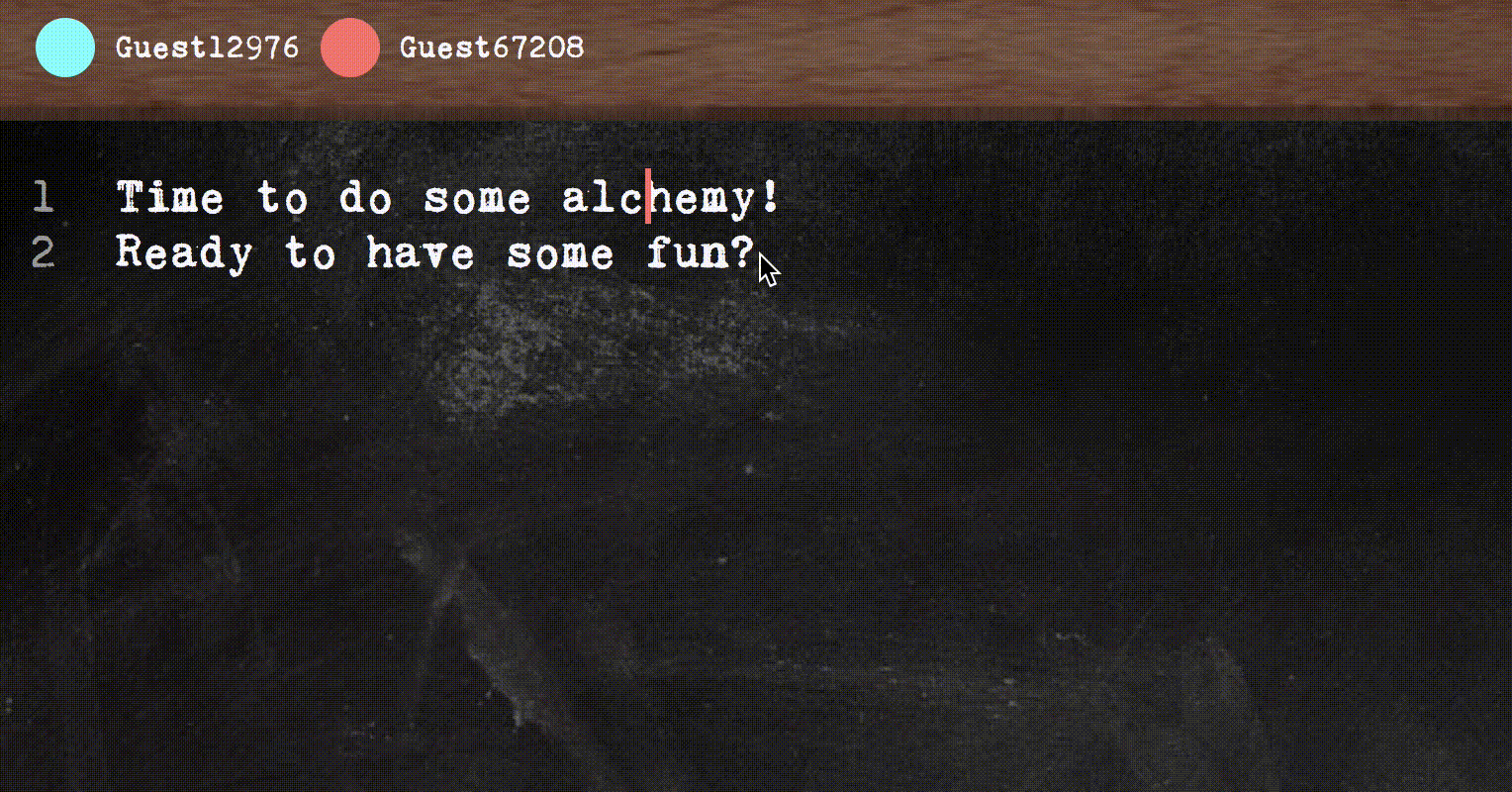This application is a toy collaborative editor that demonstrates using Conflict-Free Replicated Data Types (CRDTs) to achieve real-time synchronization. The server is written in Elixir and mostly of the CRDT logic is written in Typescript.
The aim of this project is educative and optimized for understandability rather than performance. The blog post that explains the intuition behind this technique can be found at A simple approach to building a real-time collaborative text editor.
I named the project Alchemy Book since I thought it would look nice with a blackboard theme. Since this is not going to compete with Google Docs/Dropbox Paper/etc anyway, practicality is not a concern.
Assuming you have Elixir installed, and Postgres installed and running (see Elixir & Phoenix setup guide)
mix deps.get
mix ecto.create
mix ecto.migrate
Run with
mix phoenix.server
Install the Typescript compiler and linter globally
npm install -g tslint typescript
and run the linter with npm run lint
We use Ava
npm install -g ava
which you can run with npm test
Use mix dialyzer to do static checking with Dialyzer. The first time should
take a lot of time as it runs on the dependencies too, although the results will
be cached. Note that there are still a lot of (what I think are) spurious
warnings. This is to be fixed later.
There's two ways to deploy to production.
-
The simple way is to checkout this repository (or your fork) within your server and setup Erlang, Elixir, and all the appropriate tools (this is the same as running it a prod build locally).
-
Send the self-contained package in
alchemy_book.tar.gzto your server, unpack and run. This is less work than (1) and can be done with uncommited changes which can be useful for testing. The thing I haven't figured out with this approach is how to include and run the ecto migrate script, in the package, so I still do (1) when I need to runmix ecto.migrate.
In either case, you'll want to make a production build. Create a symbolic link
to your prod.secret.exs file (and maybe to your deploy script too):
ln -s <path>/prod.secret.exs config/prod.secret.exs
with
config :alchemy_book, AlchemyBook.Endpoint,
secret_key_base: "<secret key>"
# Configure your database
config :alchemy_book, AlchemyBook.Repo,
adapter: Ecto.Adapters.Postgres,
username: "<username>",
password: "<password>",
database: "alchemy_book_prod",
pool_size: 20
Compile a production build with.
MIX_ENV=prod mix phoenix.digest
MIX_ENV=prod mix release --env=prod
The database will need to be created and migrated in production mode too:
MIX_ENV=prod mix ecto.create
MIX_ENV=prod mix ecto.migrate
And run with
PORT=8080 _build/prod/rel/alchemy_book/bin/alchemy_book <console/foreground/start>
This repository contains a mostly faithful implementation of Logoot. Note that Logoot was not originally designed for real-time editing. It was designed as a way to implement a decentralized Wikipedia with a unique ID for each line and sending line insertion/removals. I just changed it to be character-based (send individual character changes). This means that the memory overhead is huge (10x the size of the text itself) but that should be ok as most people don't write text documents of more than a few megabytes.
Logoot is supposed to work in the absence of a central server, and I think it should still be possible here, with some minor changes. The current implementation uses a centralized server though to relay messages between clients.
The presence indicator (that shows who else is present in the document) as well as cursor position is implemented using the Presence library that ships with Phoenix. Fun fact, Presence is itself a CRDT.
I tried to keep a reasonably good code quality and write comments so that it's easy for people to poke around the code. However, a couple of heads-up:
-
There is some unused code laying around for signing up, logging in and creating documents per user. It originally started that way, but I figured that it's simpler to just have anonymous document sessions for the purpose of a demo.
-
There's an unfinished attempt at using a more efficient order statistics tree for storing CRDT characters. I left it there since it makes the array-based implementation better abstracted even if it's not used.
-
I used immutable data structures where possible (it's hard when CodeMirror is inherently stateful). It's not really necessary, but you'll notice there's a bit of functional-style programming inspired from OCaml at places.
- Re-enable user login and implement access control
- Linting for .tsx and .ex files
- Upgrade to Elixir 1.5 and Phoenix 3
- Having characters fade-in and fade-out when remote changes arrive would be cool
- Fuzzy testing for the CRDT logic

